From Ashes to Innovation: How Virtual Fence is Changing Post-fire Ranching
The 2022 Moose Fire in Idaho burned thousands of acres of the Smith family’s federal grazing allotment to ash. But thanks to an experiment with virtual fencing, they were able to graze the unburned portions the following year.
New science and experimental tools are changing what we know about grazing in the aftermath of forest fires. The lessons could spark a revolution in Western ranching.
For Jay and Chyenne Smith, the cattle aren’t just an investment — they are their livelihood, their legacy, and the living embodiment of the business that they’ve built and are now working to pass on to the next generation. So, when the Moose Fire ignited in July 2022, scorching more than 130,000 acres of the Salmon-Challis National Forest in a span of more than 100 days, the impact was devastating: their life’s work and savings were suddenly trapped among flames.
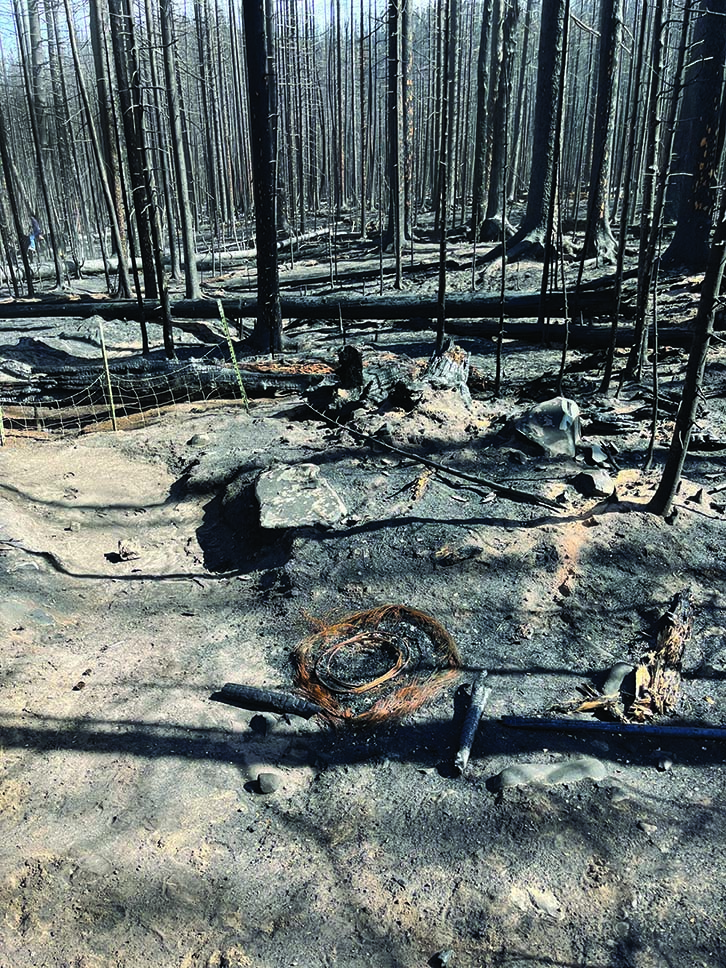
“If you didn’t believe in banks and you kept all your money in cash in your garage, and your house was on fire, and they told you ‘well, you can’t go in,’ How would you feel?”
-Jay Smith
“I mean, everything you’d ever worked for (is at risk).”
“We had to abide by the roads being closed and we had to just leave our cattle up there and hope they were okay,” Jay recalled. But sitting idle in this situation didn’t feel right to the Smiths. “I went out every day because the cows, with all the people up there and all the fire activity, wanted to leave if they could,” he explained. Chyenne added: “We were out all the time, scooping up cows, one here, one there, all summer, just mostly so that we felt like we were doing something productive.”
In the fall, after months of desperately waiting to return to the range to find cows and investigate the severity of the burn, the Smiths finally received permission to visit their allotment. “When we got the green light to go, I went out and I put 80 to 90 miles a day on a side-by-side. I went and investigated every square inch I could to find our cows,” Jay said. The Smiths experienced an overwhelming sense of relief upon seeing that the core of their herd was able to stay safe during the event. “We found most everything, and what saved us was that the heart of the range didn’t burn… the cattle were able to sustain there during the fire.”
For public lands ranchers like the Smiths, rescuing the cattle from the fire is only the beginning of the ordeal. With tens of thousands of acres of their summer range burned, and under standard federal lands policies that typically mandate a two-year no-grazing recovery period, the Smiths and their neighbors had a lot of feed to find just to keep their businesses going. Faced with restricted grazing access and a landscape in flux, the Smiths needed an innovative approach to recovery—one that could restore balance without overburdening already-stressed lands. Could virtual fencing be the solution?
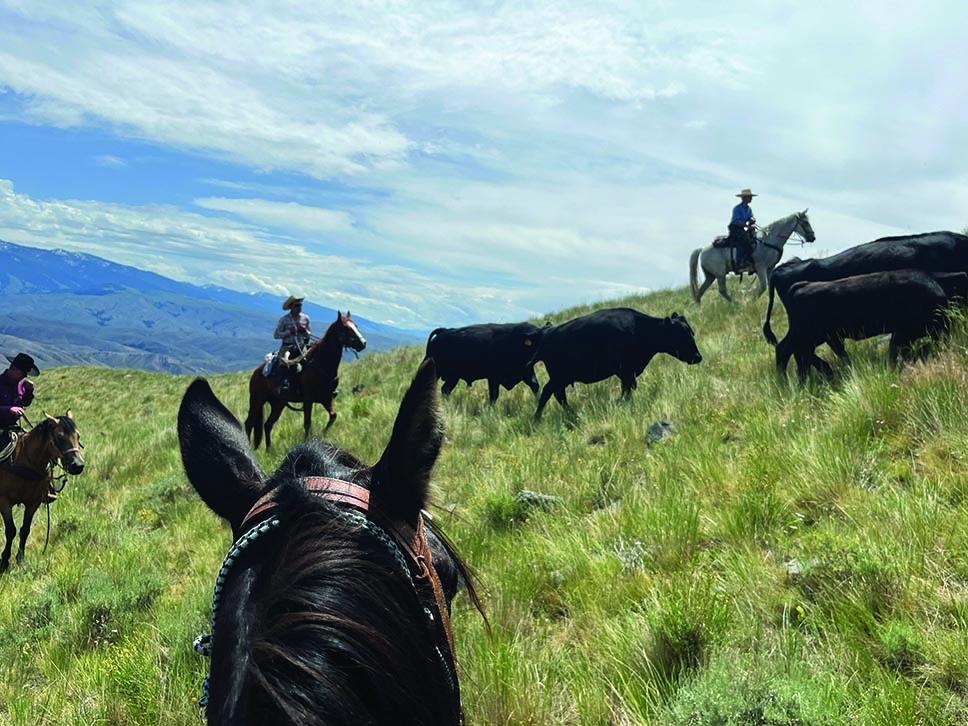
A New Approach to Grazing After Wildfire
In 2021, almost a year to the day before the Moose Fire ignited, the Smiths had hosted Idaho Governor Brad Little on their ranch and allotment for his annual “trail ride.” Jay recalled a lengthy conversation with the governor that day about how the forest was a tinderbox, waiting for a spark. Grazing was “the only real management” that had been done in the forest, Jay said, and it was clear to him on the ride that day that it was far from sufficient to prevent what would end up happening the following summer.
Amid this grim irony, the Smiths found themselves in a unique position. Years of strategic planning and careful stocking decisions—balancing cattle numbers with overall grass availability and opportunity to prevent overstocking—enabled them to adapt quickly. Their preventative approach provided a critical buffer as they navigated the Moose Fire’s aftermath, demonstrating how foresight in ranching operations is a powerful tool for survival as wildfire, drought and other disaster scenarios are increasing exponentially. This thoughtful planning not only allowed them flexibility during adverse events but also minimized environmental strain, fostering healthier rangelands that could withstand ever-growing pressures.
“I’d watched so many of my neighbors get evicted for two to three years post-wildfire. I just knew that was the wrong answer for the management of our forests and the economics of our ranch.”
Jay Smith
After a wildfire, grazing allotments on public lands are typically closed for two or three years under the terms of the applicable federal land use or forest management plan to allow for ecological recovery. However, when the Smiths spent time on the landscape post-fire, they found that while some parts of their allotment burned severely, others—including nearly 40,000 acres of prime grazing land—remained untouched by the flames. “I’d watched so many of my neighbors get evicted for two to three years post-wildfire,” Jay explained. “I just knew that was the wrong answer for the management of our forests and the economics of our ranch.”
Determined to find a solution, the Smiths reached out to the University of Idaho, which had planned to conduct virtual fencing research in a nearby area the following year. In collaboration with university researchers, federal land management agencies, neighboring ranchers and other partners, the Smiths launched a post-wildfire virtual fencing experiment. The goal was to use the virtual fence to graze only the unburned and lightly impacted areas, while avoiding the severely damaged ones. It was a strategy that had never been tested at this scale. With the University of Idaho’s researchers running the experiment, they received permission from the Forest Service to return to the unburned portion of their allotment at 40% of their normal stocking rate just one year after the fire.
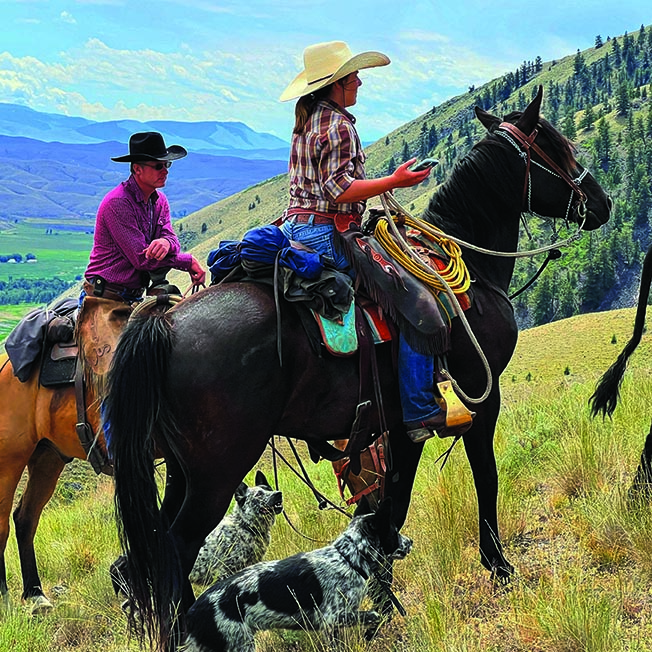
Rebuilding with Precision
Timing can be the difference between survival or bankruptcy in the cattle industry. Grass grows and recovers at different rates, and cattle markets fluctuate. If you aren’t prepared, or aren’t allowed, to adapt to circumstances, grazing may be implemented in ways that compromise range health, costing you productivity in following years. Or you may be forced to sell your herd during a market downturn. Selling the herd costs more than just money; you lose the genetic investments (breeding) and business stability you spent years building. And you are likely to face much higher prices when circumstances have changed and you can finally consider restocking. Virtual fencing helped the Smiths avoid both problems.
At first glance, it might seem that virtual fencing, by concentrating the cows on the smaller area within the allotment that hadn’t burned, would drastically increase their impact on the remaining rangeland. But the research shows that this has not been the case. The GPS-enabled collars allowed the Smiths to manage their grazing management more strategically. Before implementing virtual fencing, some areas of their allotment were overgrazed, while others remained underutilized, as cattle naturally gravitated toward familiar or more comfortable terrain, water sources or higher-quality forage. Now, the Smiths can guide cattle distribution more evenly across the landscape, ensuring that forage is used efficiently and rangeland recovery is optimized.
“In the past, you couldn’t ride hard enough to keep some of those cows from going too soon or coming back.”
Chyenne Smith
“In the past, you couldn’t ride hard enough to keep some of those cows from going too soon or coming back,” Chyenne says. “You would have a vast chunk of the mountain that a lot of those cows just skipped. Now we are using that middle section that they were skipping and getting good utilization out of that, but still being well within standards, still practicing good range management.”
The University of Idaho researchers reported that with the virtual fencing in 2023, the Smiths had actually increased the recovery of their allotment compared to other areas. The Forest Service granted them permission to turn out at full capacity the following season.
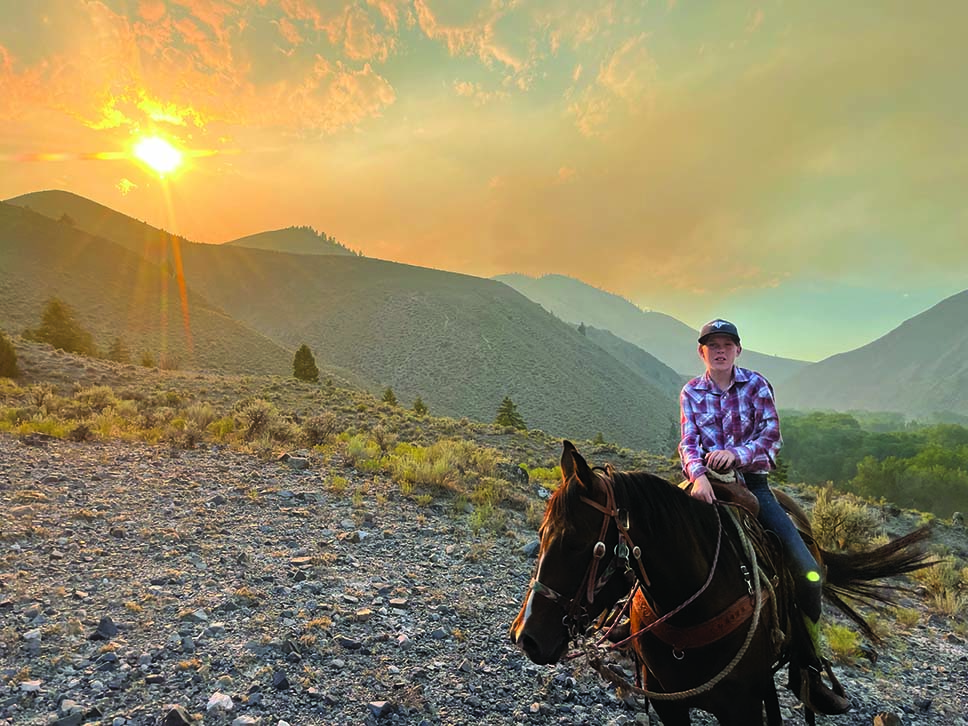
A Model for the Future
For the Smiths, the virtual fencing experiment helped them remain in operation for the surge in cattle prices in 2023 and 2024. “We get a good run every 10 years historically,” Jay explained. “So, if we wouldn’t have been able to turn out, and we would have had to sell out right before things got good, it would have been economically devastating.”
The Moose Fire is just one of many catastrophic wildfires that have reshaped the Western landscape in recent years, but its aftermath has offered a blueprint for resilience. With longer, hotter fire seasons becoming the new normal, ranchers must adapt to ensure both economic and ecological viability. For the Smiths and other impacted ranchers, technologies like virtual fencing may prove to be more than just a recovery tool, but also a critical component of future range management.
The benefits of virtual fencing have extended far beyond the immediate need for post-fire recovery. The GPS data has provided insight into predator-livestock interactions, helping the Smiths address conflict more quickly. The technology has also provided insights to cow behavior and has impacted the way that the family navigates range riding. “My family has run cattle on this land for over 100 years, and we learned more in a couple of months about their behavior than we’d learned in 100 years because we could track them in real time and see where they were actually going,” Jay said. “It was fascinating. Still is fascinating.”
Before the implementation of virtual fencing, range riders spent countless hours tracking and moving cattle. Now, with real-time GPS tracking, the Smiths can manage their herd more effectively, while freeing up time for other essential ranch operations. It’s created an opportunity to open up other doors,” Jay and Chyenne’s oldest son Mike explained. “It’s made our labor resources more efficient, and that means that when we do go ride, we can actually enjoy it.”
Photos courtesy of Chyenne Smith.
Sorry, the comment form is closed at this time.


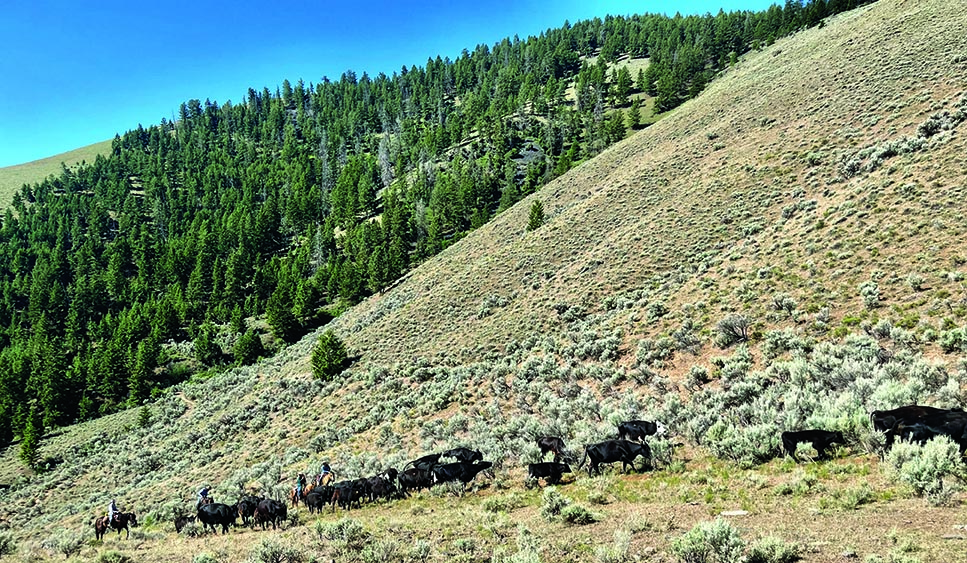
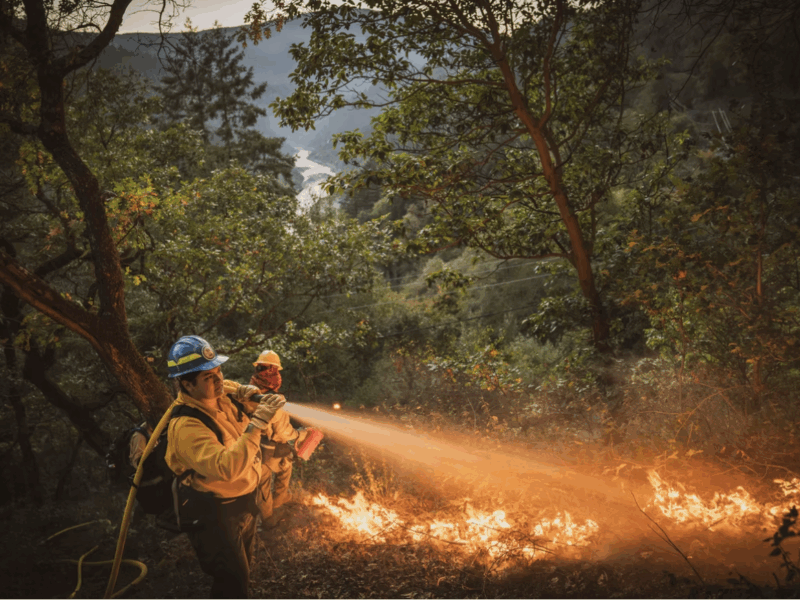
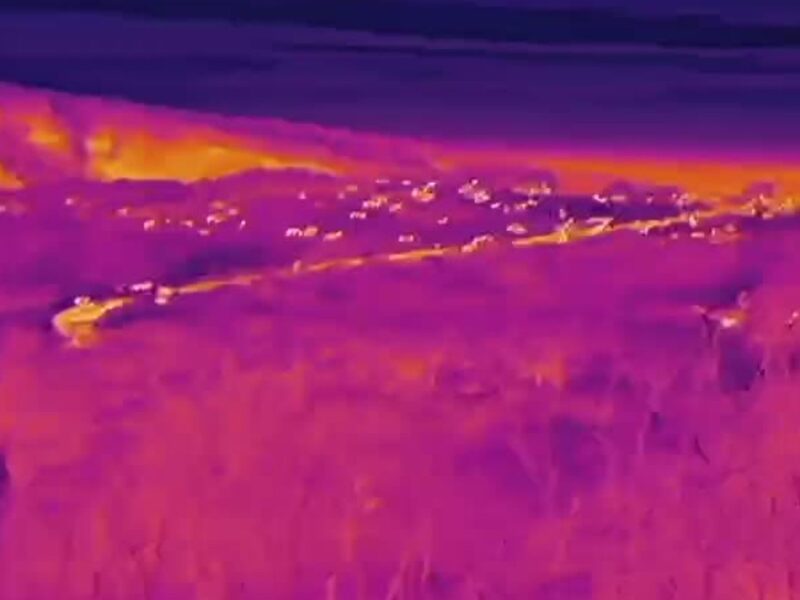
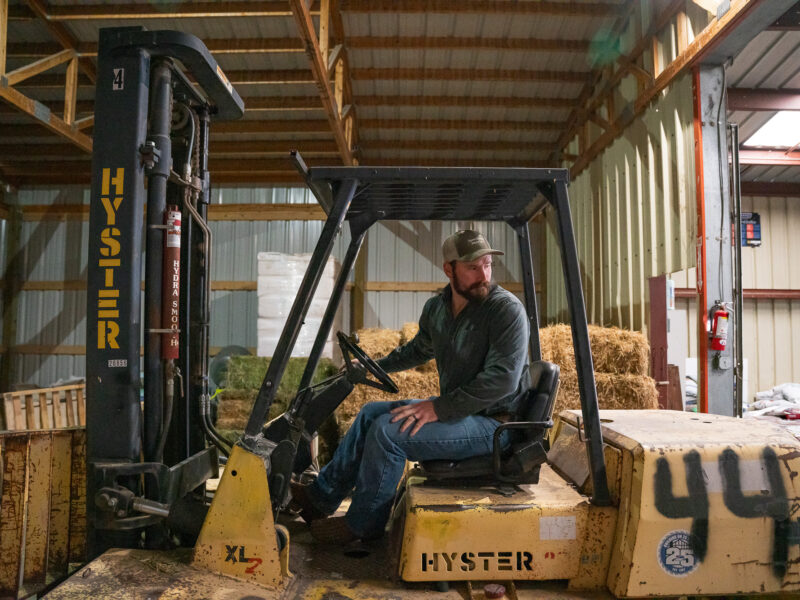
Steve Stuebner
Nice job on the story Lane, great to spread the word about this win-win project.
The face of disaster, Jay and Chyenne showed a lot of foresight and grit by reaching out to the agency partners and the University of Idaho and quickly installing a Virtual Fencing grazing system post-fire so they could still graze areas that were unharmed by the fire …
We did a 15-minute documentary about this situation for Life on the Range … here’s the link: https://www.youtube.com/watch?v=dZeKGVLJQ80
Steve Stuebner
Mean to say “In the face of disaster” Jay and Chyenne showed a lot of foresight and grit …
Steve Murphy
How many cattle were involved in the virtual fence trial? I have a potential application here in Australia, but here we’re talking about 4000+ head grazing over 125,000 ha